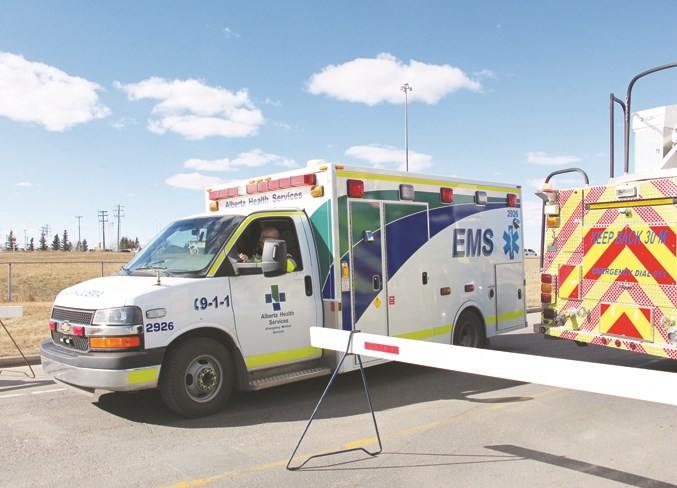KENORA – Back in May, the Kenora Paramedics Union, CUPE 5911, asked all levels of government to address the systemic issues impacting Northern Ontario’s health care system.
On Monday, Derek Hamilton, president of CUPE 5911, and Nicole Runge, vice president of CUPE 5911 once again called on all levels of government to aid in addressing the health care crisis in a joint statement.
Northwestern Ontario is a large geographical area, yet, according to Runge, funding supports for paramedics, doctors, nurses, mental health and addictions supports, and affordable housing are grossly lacking in Northern communities.
“Without these accesses, we have been seeing a significant increase in call volumes over the last couple of years, and especially during the pandemic,” said Runge.
According to Runge, the call volume in Sioux Lookout has risen by 31.5 per cent in recent years, with no increase in service since 2017.
“Paramedics have been the bandaid for the multiple systems that are failing around Northwestern Ontario,” she said.
To highlight the staffing challenges, the union has begun tracking staffing levels at regional bases. Residents can follow the Facebook page at Paramedics of Kenora district service CUPE Local 5911.
Thepage offers information on down-staffed bases in local communities like Red Lake, Sioux Lookout, Dryden, and Kenora.
For example, on Sept. 2, a post read, “Kenora is down-staffed to 2 ambulances for the day.” In Dryden, EMS services were “down-staffed to one ambulance and one single paramedic for the day.”
“Along with these down-staffed [bases] and due to a lack of staff of paramedics, we’ve been asked to work 16-hour shifts routinely to ensure community safety and emergency coverages,” said Runge.
Just like physicians and nurses in Northwestern Ontario, paramedic services are severely understaffed. Retention and recruitment are down significantly and wages have not risen, she said.
Runge said the lack of housing in the North is a major contributor to recruitment and retention challenges, while the availability of EMS courses through educational institutions in the region is practically non-existent.
In 2017, Kenora District EMS services received roughly 200 applications for paramedic positions, she reported. However, in 2021, applications dropped to between 30 to 40, and continue to fall.
“Now, in 2022, we have single-digit applicants,” she said.
Lack of education is a factor in the lack of applicants, she said.
“[Confederation] Collage in our area has shut down for the paramedic program, and the last class that will be graduating is in 2022,” she said. “Over 40 per cent of our staff was coming from the Con College, and now that is no longer an option.”
Currently, the Seven Generation Institute is the only higher learning facility in the Kenora District to offer the paramedic course, but Runge told NWONewsWatch the program will produce only four graduates this year.
Alternatively, she acknowledged most paramedics come from Southern Ontario. However, due to staffing shortages in the south, these paramedics are opting to stay closer to home. Moreover, the lack of affordable housing in the North is another barrier for people looking to relocate, she said.
“Why would they leave their home and family, which is over 24 hours away, and come here where they can’t find housing, they can’t get a family doctor, they can’t access counselling if they have a bad call, their wage parity is completely off, and there is no wage incentive,” she said.
In First Nations, some reservations have first response teams and nursing stations, but they are also underfunded and have trouble with staffing, Runge said, calling some of those nursing stations in complete disrepair and unusable.
“Along with their first response team that is lined up and waiting for training, I'm not sure if they're waiting for funding to be able to be trained appropriately, to help their own community members,” she said. “Which would make a significant difference if you were able to walk down the street to your nursing station or call your local first responders to help you until us paramedics that are very short staffed are able to get there. For some of these communities, we are more than two hours away.”
Ronge is hoping governments at all levels will seriously consider immediate investments in underserved northern communities to help address poverty, homelessness and addictions issues that often lead to crisis situations. Without this investment, these systemic problems will continue to degrade a health care system at risk of collapse, she said.
